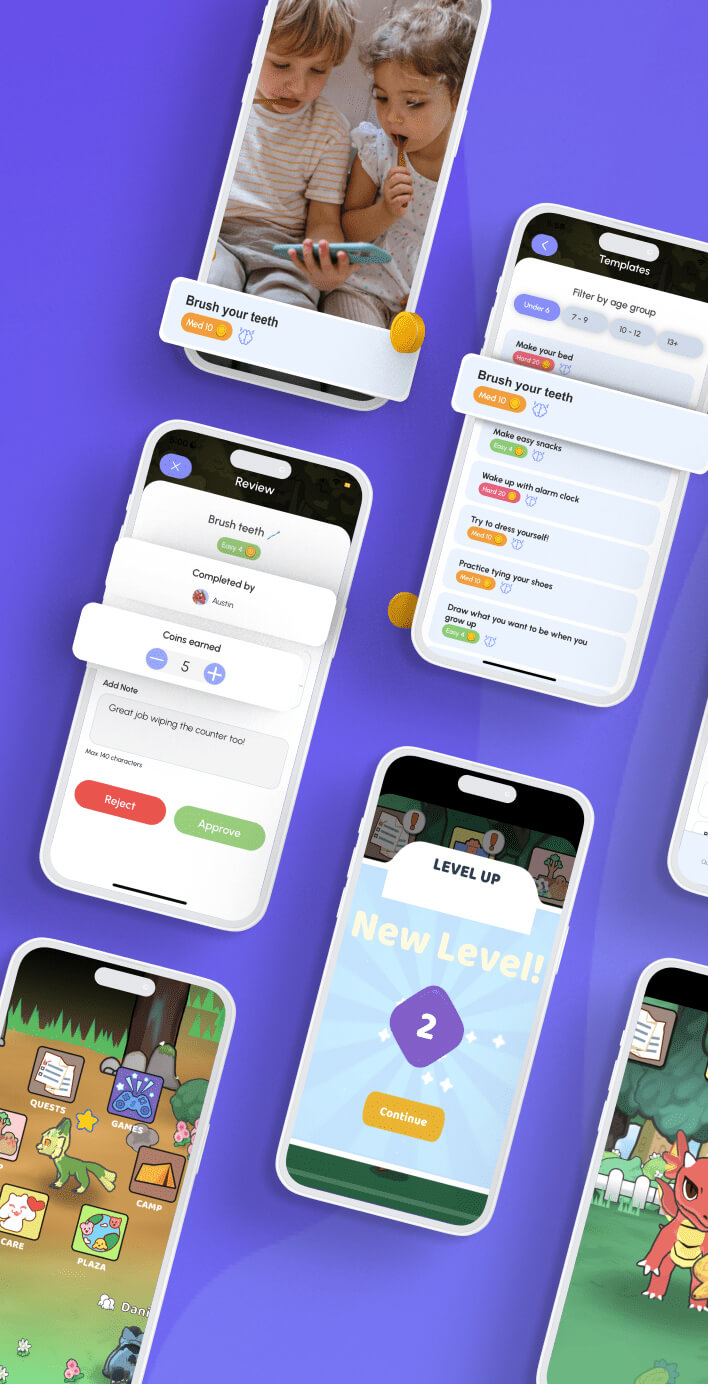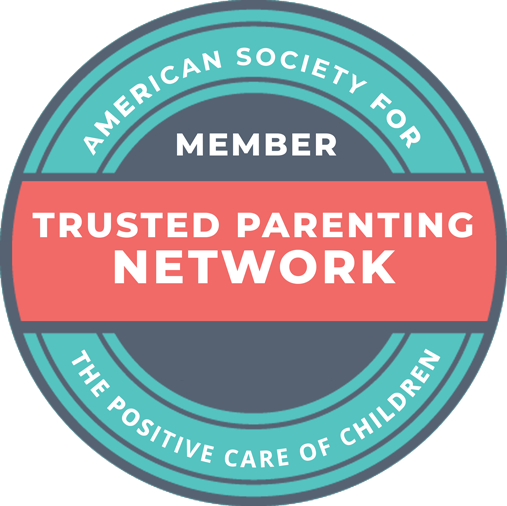Unlocking Success: Reward Systems for Children with ADHD
Parents often wonder whether or not they should use reward systems for their kids. With ADHD, harnessing the power of a reward system can be valuable for both children and adults because of how their brains uniquely function. Rewards help people with ADHD connect to a task, get focused, and stay focused. They promote follow-through, confidence, and overall success.
Choosing the right reward system can help you avoid concerns like over-reliance on rewards and lack of sustainability. So, what should you know about using reward systems to support children with ADHD?
First, let’s go over the benefits of reward systems for children with ADHD, types of reward systems, and how to set up and use Joon as a reward system. Then, we’ll discuss ways to address potential pitfalls in reward systems for these children with ADHD.
This Trusted Parenting Network Article brought to you by

Joon Health empowers children and families to thrive by harnessing the power of technology for pediatric behavioral health.
Joon Health is a groundbreaking healthcare technology company specializing in providing innovative solutions for pediatric behavioral health. Founded with the mission of transforming the lives of children and families affected by conditions like ADHD, autism, anxiety, and depression, Joon Health offers an integrated behavior improvement platform. At the core of their offerings is a game-based digital therapeutic designed to engage children in real-life behaviors that are monitored and managed by parents and clinicians. Joon Health’s vision is to become the leading digital treatment platform for pediatric behavior disorders over the next decade, leveraging cutting-edge technology to drive positive behavior change.

Carrie Jackson, Ph.D
Read Bio
Carrie Jackson, Ph.D. is a licensed child psychologist, speaker, and author working in San Diego, California. She has published over 20 articles and book chapters related to parenting, ADHD, and defiance. Dr. Carrie Jackson received her Ph.D. in Psychology, with a specialization in Clinical Child Psychology, from West Virginia University in 2020. She completed her predoctoral internship at Rady Children’s Hospital through the University of California, San Diego. She then completed a postdoctoral fellowship at Nationwide Children’s Hospital before returning to San Diego, California to open her private practice.
How Does the ADHD Brain Work?
Brain differences explain ADHD symptoms, but they also reveal how and why rewards unlock success in those with ADHD. ADHD is linked to lower levels of some neurotransmitters, one of which is called dopamine. Dopamine is associated with the reward center in the brain, as well as mood.
Since the ADHD brain has lower dopamine levels, people with ADHD respond well to things that boost dopamine levels and, in turn, make that reward system “light up.”
It doesn’t take exuberant rewards to make the reward system light up or increase dopamine. Sometimes, something as simple as hearing “Great job!” can make a world of difference.
Differences in boys vs. girls
Where someone is on the gender spectrum can impact their experience with ADHD. It is relatively well-known that girls with ADHD are more likely to have internalized symptoms, whereas boys are more likely to have externalized symptoms. Though this isn’t always the case, it does explain why inattentive ADHD is the type most often found in girls and why many women or girls get diagnosed later in life than boys do.
Similarly, boys are more likely to have motor deficits, whereas girls tend to face more severe executive dysfunction. Poor executive dysfunction can lead to trouble with decision-making, the ability to self-start, and more.
Gender can also affect a person’s response to rewards. Some studies show that girls with ADHD exhibit abnormal delay discounting of real-time rewards. So, it may take some time to find the kind of reward or reward system that your child responds to.
Trying a couple of reward systems, such as a combination of an app like Joon and verbal praise, may be useful for parents seeking the best reward system for kids with ADHD.
Benefits of Reward Systems for Children with ADHD
Research shows that kids with ADHD respond positively to rewards and show greater improvement in task performance with rewards when compared to children without the condition. This is part of why rewards are recommended for children with ADHD. With that in mind, here are just a few standout benefits of reward systems for kids with ADHD.
Improved behavior and focus
Rewards work for kids with ADHD because they help the brain connect to the task at hand. When the brain is aware that it’ll get the dopamine from a reward, it is better able to focus on what needs to be done to access that reward.
Building positive habits and routines
Routine and positive habits can be critical for thriving with ADHD, but sticking to them can be more challenging when you have the condition. Rewards help children get into routines and stick to habits, so they can reap the benefits.
Boosting self-esteem and confidence
When kids are able to complete tasks or engage in habits they benefit from, it helps them feel good about themselves. Kids with ADHD tend to battle low self-esteem, often impacted by their symptoms. Since rewards help kids succeed and manage symptoms, finding a reward system that works for your family can improve your child’s mental health and confidence.

Types of Reward Systems
The following types of reward systems are practical, thoughtful solutions for kids with ADHD. Remember that every child and family is different. If one reward system doesn’t work for your family, try another. Don’t give up, and keep reading until the end to find tips you can use to troubleshoot setbacks that arise during the process.
Joon
If you’re looking for a reward system that works for neurodivergent children, you’re in the right place. Geared toward kids living ADHD and related disorders, Joon increases independence and follow-through in kids while motivating them to complete tasks naturally. In fact, many parents find that their kids start requesting more tasks when they use the app!
What is Joon?
Joon is a to-do app that doubles as a game. Parents sign up first with a parent account and make a fully customizable task list for their child or children. When kids finish tasks, they get rewards in the game that allow them to take care of a virtual pet called a Doter.
Joon is 100% free to use. Families can use the free version of Joon indefinitely; the only downfall is that you don’t get all the awesome features the app offers.
To get Joon’s premium features, you can start a 7-day free trial. Once the trial expires, you can choose from a monthly plan for $12.99 or an annual plan for $89.99 to retain access. You can also return to the free plan after your 7-day trial.
How does Joon work?
Joon works by gamifying everyday activities like chores, homework, and self-care. Even parents of kids who struggle with habit-forming and task completion often find Joon effective. Parents don’t have to come up with, keep track of, or shop for rewards because they’re all in the app. There are no surprise fees or purchases, and kids learn to finish age-appropriate tasks all by themselves.
Token Systems
Using a token system lets kids save up for exciting rewards like toys, concerts, clothing items, games, or a trip to the park. They will have to complete multiple tasks, usually over the course of weeks or months, to get enough “tokens” to exchange for a prize. This can be ideal for older kids who no longer feel motivated by small toys and similar rewards.
How token systems work
Token systems usually involve putting coins or other small items (e.g., pom poms) into a jar and allowing children to exchange them for items or experiences they want when they have enough. To start using a token system, write out rewards that your child can work toward, how many tokens they’ll cost, and how many tokens will be earned per task. For example, a child might earn one token for taking the garbage out. Kids still get the excitement of getting closer to their goal each time they collect another token.
Examples of token rewards
Most parents will offer a list of token rewards ranging from those that require a smaller number of tokens to those that require a larger number of tokens. Since they’re often less costly, rewards that require a smaller number of tokens could include an extra hour of screen time or having a friend over. An example of a reward that requires a larger number of tokens could be a toy that your child wants and would likely be willing to save points for.


Point Systems
Point systems are similar to token systems, but there are some minor differences to consider. Parents may opt for one or the other based on what they think will work best for their child.
How point systems work
Point systems involve keeping track of “points” a child earns on a piece of paper, whiteboard, or elsewhere. Parents should prepare both a place to track points and a guide for their kids that shows a list of rewards to choose from, how many points each reward costs, and the number of points a child will get for each chore or task.
Examples of point rewards
Like token systems, one benefit of point systems is that they allow children to “save up” for bigger rewards. Similar to token systems, kids might exchange rewards for their choice of various items and experiences parents are able to present as an option.
Daily/Weekly Charts
Daily and weekly charts are a classic way for parents and their kids to keep track of a child’s follow-through. In many cases, these are used for younger kids to track chores or make progress with goals.
Creating and using charts effectively
Charts should be engaging and easy for kids to understand. Bright colors, spacious squares that leave room for detail, and interactive qualities (e.g., allowing kids to put stickers on a square when they’ve completed a task) can all raise the efficacy of charts.
Examples of chart rewards
There are a couple of ways to use chart rewards. Some parents use dry-erase boards or laminated paper charts. Others use printout charts or virtual charts, such as charts you and your child can view through a mobile app.


Immediate Rewards
Regardless of reward type, ensuring rewards are immediate is one of the best things you can do for a child with ADHD. In addition to being more responsive to rewards than other kids in general, children with ADHD frequently exhibit what’s called “delay aversion.” In other words, they respond best to immediate rewards vs. rewards they’d only be able to access later on, even if the immediate rewards are smaller or seem less appealing.
Using immediate rewards for quick reinforcement
Research shows that immediate rewards are the most effective for people with ADHD, proving further that it’s more about using the power of the reward system in the brain than the item itself. To use immediate rewards, parents must select a reward that they can give their child right away once a task is complete.
Examples of immediate rewards
Immediate rewards can require some planning from families. Here are some examples of immediate rewards that often work :
- Items that can be given to a child directly after the task is complete (e.g., providing gum or a small toy right when your child shows you that they have cleaned their room).
- Apps like Joon, where parents can approve and reward tasks instantaneously.
Overcoming Challenges and Pitfalls
Some kids may experience more challenges and pitfalls than others. Here are some common obstacles or circumstances parents might face when using reward systems for children with ADHD and tips on how to address them.
Dealing with setbacks and resistance
Often, the first step to overcoming setbacks and resistance from kids is to find out what’s occurring on their end. Do the rewards you’re using interest your child? Are ADHD symptoms preventing your child from starting or finishing tasks? Is your child demand-avoidant?
These are just some examples of what might be going on. Once you look at a child’s patterns, it may lead you toward a solution. For example, they might need an explanation as to why a task matters, or they might need a parent to help them through the task step-by-step to learn.
Alternatively, they could benefit most from a reward system other than the one your family uses currently. If a child is demand-avoidant, you might have to reframe chores and other daily activities so that they don’t feel like “demands” or “requests.”
Finding what works is possible, even when it takes trial and error. Mental health professionals like child therapists can help families through sticking points, especially if you have tried to address setbacks yourself to no avail.
Avoiding over-reliance on rewards
While reward systems are productive and advantageous for many people with ADHD, it is important to avoid over-reliance. Use these tips to avoid over-reliance on rewards in kids with ADHD.
- Ensure that rewards are sustainable. Some rewards should be used infrequently or not at all. Particularly, if they’re unsustainable for your family. An example of an unsustainable reward includes expensive items or experiences.
- Choose the tasks you reward wisely. Reserve rewards for tasks that require external motivation or tasks your child does not complete when asked. If your child doesn’t have trouble going to piano practice because they’re internally motivated by their own enjoyment, for example, there’s no need to reward it.
Transitioning from external to internal motivation
When it comes to the majority of tasks and habits parents wish to instill in their kids, the eventual goal is to get to a place where your child can perform these actions without a reward. There are ways to make this transition go more smoothly.
As kids get older, parents can communicate that they no longer need certain reward systems anymore. For example, a toddler going through potty training with a sticker chart won’t need it forever. Connecting with kids, explaining why certain tasks are important, providing reminders for kids who forget easily, and, in some cases, appropriate consequences may all be valuable.
Apps like Joon are excellent for helping kids establish internal motivation for tasks. The app sends reminders to your child, which helps them become more self-starting. You can work with your child to ease into following their own task list as needed, advancing their independence gradually.
No matter what, remain patient and understanding with yourself and your child. Behavior change takes time for both kids and adults, and you’ll be impressed by the progress made when you reflect back later on.
Conclusion
Research shows that rewards encourage positive behavior, productivity, and habit formation in people with ADHD. When you find the right reward system for a child with ADHD, it can help unlock their full potential and success. In return, children experience an increase in self-esteem and internal motivation. Parents, caregivers, and therapists may find that it takes time to find the most suitable reward system for a child. With perseverance and compassion, you can troubleshoot and overcome challenges or pitfalls that arise along the way.

Trusted Parenting Network
The Trusted Parenting Network harnesses the power of the internet to further American SPCC’s mission of bringing meaningful parenting support to families across the globe.
From offering impactful resources to hosting online interviews, members of our Trusted Parenting Network offer unique insights and solutions as subject matter experts on today’s top parenting topics.
